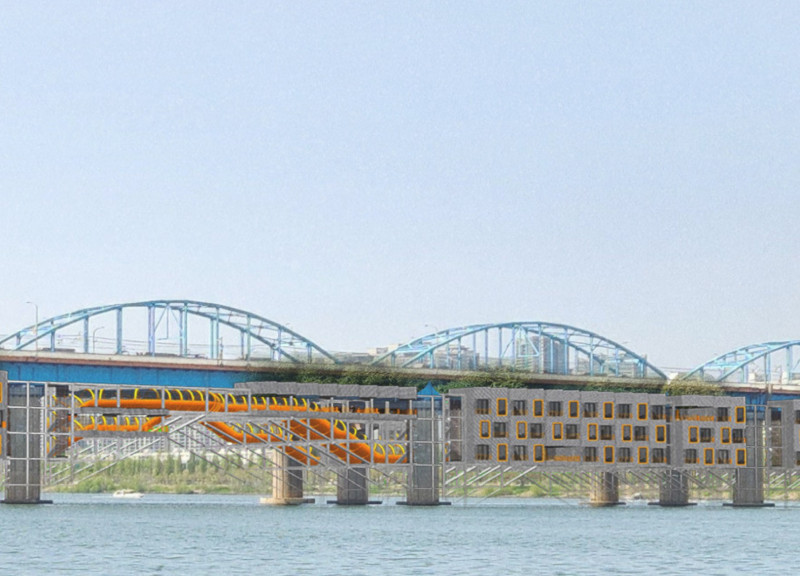5 key facts about this project
At the core of this project is the functionality it provides. Designed primarily for [describe primary function, such as residential, commercial, or mixed-use], the building caters to the needs of [target audience or user group]. Each element of the design is strategically planned to enhance usability, ensuring that spaces facilitate interaction, comfort, and productivity. The layout features a balance between communal areas and private spaces, encouraging engagement while offering respite. This duality is essential to the project’s success, allowing it to serve both as a gathering point and a sanctuary.
The architectural language of [Project Name] is marked by the careful selection of materials that reflects its context and purpose. Concrete forms the backbone of the structure, providing durability and stability, while its raw texture offers a modern aesthetic that resonates with contemporary architectural trends. Steel, utilized in vertical supports and framing, adds strength and flexibility, allowing for expansive interior spaces free of obstructive columns. The extensive use of glass not only facilitates natural light penetration but also strives to connect indoor spaces with the outdoor environment, enhancing the occupants' experiential quality and promoting a sense of openness.
Closely integrated with the architectural design are landscaping elements that complement the overall aesthetic. Native plants and strategically placed trees soften the hardscape, creating a welcoming transition between the architecture and its surroundings. Thoughtful landscaping not only improves aesthetics but also engages with sustainability goals, as these features help manage rainwater and support local biodiversity.
Unique design approaches in [Project Name] contribute significantly to its overall character. The innovative roof structure, for instance, is designed to collect rainwater, which is then filtered and stored for irrigation purposes, underscoring the project’s commitment to sustainability. The building orientation maximizes passive solar gain, while overhangs protect against excessive heat during summer months, thus reducing reliance on mechanical heating and cooling systems. Such environmental considerations are integral to the architecture and reflect a growing awareness of ecological impact.
Inside the building, the spatial planning promotes both movement and interaction. Public areas are designed with flexibility in mind, allowing for various uses and events. The use of movable partitions enables transformation of spaces based on needs, catering to different functions while maintaining a cohesive aesthetic. Interior finishes incorporate natural materials, like wood, which add warmth and textural interest, fostering a calming atmosphere suitable for both work and relaxation.
In exploring the architectural plans and sections, one can appreciate the meticulous detailing and design nuances embedded within the project. Each design decision, from the choice of materials to the orientation of spaces, is founded upon a comprehensive understanding of the site conditions and the needs of its users. Architectural designs of this caliber are not only visually appealing but also serve as a testament to thoughtful consideration of function and sustainability.
Readers seeking deeper insights into [Project Name] are encouraged to explore the presentation of the architectural plans, sections, and additional architectural ideas that illuminate the intent behind this design. Delving into the specifics of the project reveals the layers of thought that shape its narrative, emphasizing a commitment to creating spaces that resonate with users and fit seamlessly within their environment. Such exploration contributes to a greater understanding of modern architecture's capabilities and the importance of context-sensitive design in shaping our built environment.


 Oh Minjun
Oh Minjun 




















